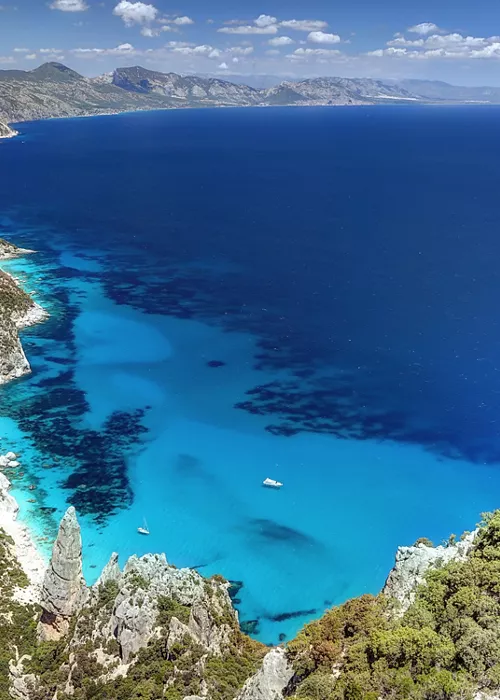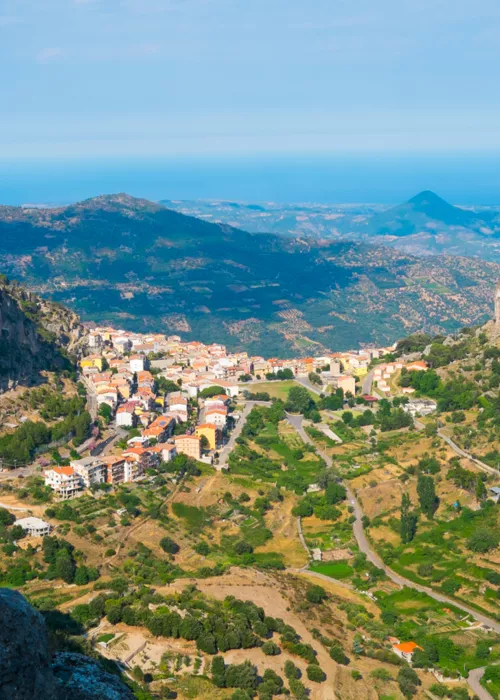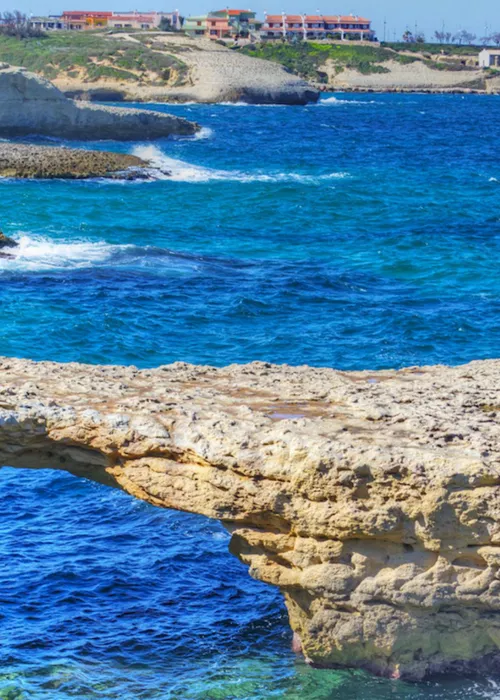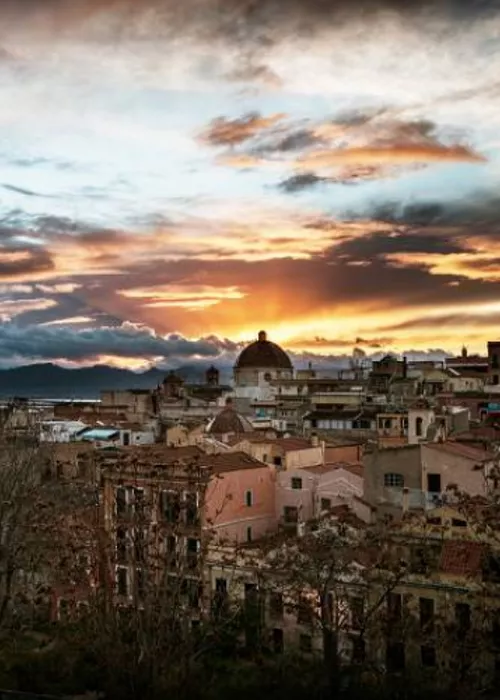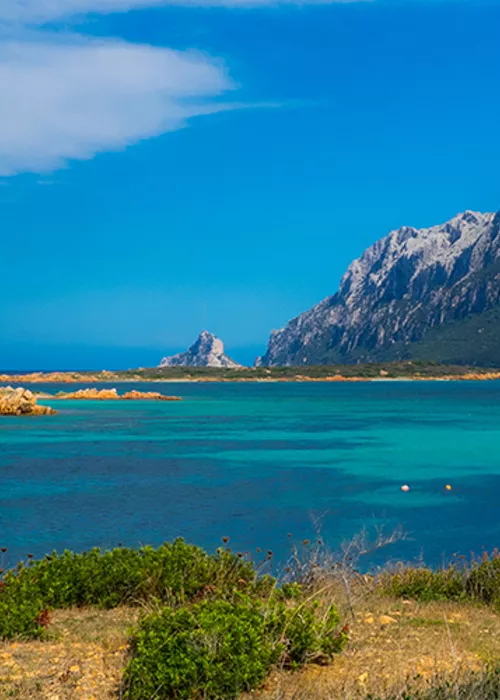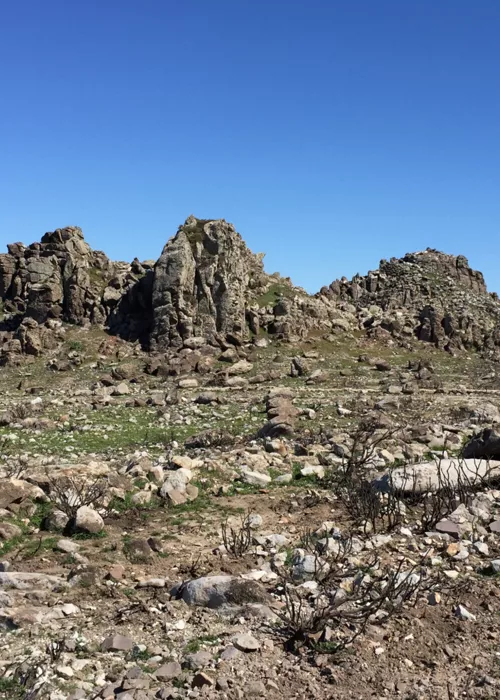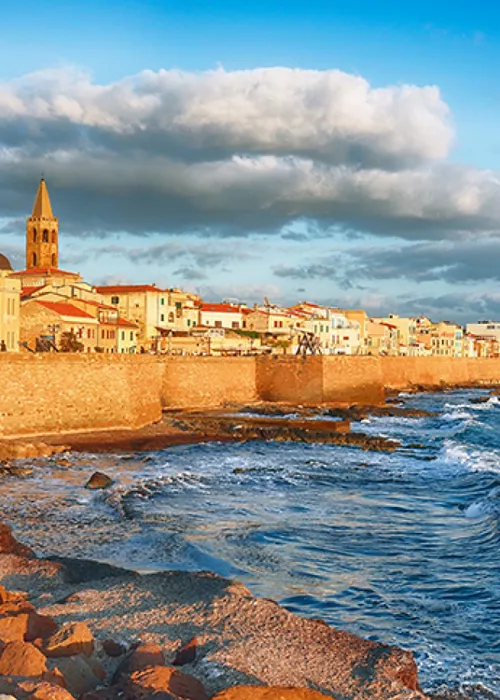Posada

The ancient village of Posada is the ideal gateway to the Baronie. Easily reached from Olbia, it makes its presence felt even from afar in a very scenic way: the old town centre climbs a cliff that stands out against the surrounding plains, and at the top of which towers the stern profile of the castle of La Fava. The mediaeval fortress is named after a curious legend, which tells how the inhabitants of Posada managed to drive away Saracen pirates thanks to a pigeon and a handful of broad beans. Before reaching the castle, have a stroll through the cobbled streets and colourful walls of the small old town. Then delve into the history of the village by visiting the fortress and discovering the importance the village has had throughout the centuries, as well as enjoying the panoramic view from the walls over the Tyrrhenian Sea.
Today, Posada is most of all a seaside destination, and the coastline can be reached from the town in a very short time, even on foot or by bicycle. Among its five beaches, the beach of San Giovanni is characterised by the presence of the Aragonese watchtower of San Giovanni, which was used to defend against pirates and invaders.
Mount Albo

Following the SS 125 in a southerly direction, you start to see the outline of Mount Albo, a giant rock emerging from the bushes. At over 1000 metres tall, it is the dominant feature of the Baronie landscape. The mountain is called Albo ("white") because of its limestone ridges that create a barren, almost lunar landscape.
Continuing along the road, you pass through Siniscola on to the provincial road SP 3, which in just a few minutes takes you to the Old Canton of Sant'Anna, now home to the CEAS (Montalbo di Lodè Centre for Environmental Education and Sustainability). The CEAS is the starting point for several trails and paths towards the mountain, and is the place to go for information about the best route. For an enjoyable trip, less experienced hikers should go with a guide, or choose from one of the organised excursions - not all the trails are well signposted.
Whichever route you choose, trekking up Mount Albo will be a tiring but rewarding experience: as you ascend up the slopes, you'll be immersed in an extraordinary biodiversity of flora and fauna. At the summit, the panorama opens up to an expanse of green, of all different shades, stretching as far as the eye can see. On a clear day, if you turn to face eastwards, the green makes way for the blue of the Tyrrhenian coast. Along the route, you will also come across sheepfolds and huts once used by shepherds on the transhumance routes. Another thing to note is the presence of nuraghic sites throughout the mountain area.
Archaeological complex of Janna ‘e Pruna

Immersed in the greenery of the Mount Senes ridge, the archaeological complex of Janna 'e Pruna bears silent testimony to the nuraghic history of the Baronie.
If you are arriving from the Siniscola area, the site is easy to get to by heading south along Provincial Road 45, and then turning off onto rough and bumpy roads.
This sacred site once consisted of several buildings, and was used by the nuraghic peoples for religious services and votive rituals. Crossing the threshold of the complex, you will immediately see the temple that gives the site its name, before continuing on to the sacred spring of Su Notante, a masterpiece of Bronze Age engineering, dedicated to the worship of water. Other buildings of unknown function have been found here, and this is one of the many unfathomable mysteries that still surround the Nuraghic civilization. To avoid leaving the shrine of Janna 'e Pruna with more questions than answers, we recommend making a visit to the nearby Antiquarium in Irgoli, where you can see some of the artefacts found on the site. The museum is the perfect way to round off your visit to the archaeological site, and takes you on a route that narrates the history of this region from the Neolithic era to the Middle Ages.
Galtellì

Separated from the Tyrrhenian by Mount Todavista, dominated by the natural monument of Sa Preta Istampata, Galtellì looks like a quiet medieval village where time has stood still. But what is now primarily a holiday destination and spiritual retreat was in the past one of the most important administrative towns in the southern Baronie. From Irgoli it is easy to reach Galtellì on the SP 25 heading south, and then continuing on the national road, the Statale 129. The sleepy historic town of Galtellì welcomes you with its rows of low buildings, a relaxing place to stop. The village has an Orange Flag of the Italian Touring Club and is known as the setting for "Reeds in the Wind", the most famous book written by Grazia Deledda. Walking through the narrow stone streets, you can follow in the writer's footsteps and spot the places described in the novel. Deledda is so far the only Italian woman ever to receive a Nobel Prize for literature. Don't miss the chance to visit the “Grazia Deledda Literary Park". At the end of your literary exploration, why not head to the Sa domo ‘e sos Marras Ethnographic Museum. The museum is housed in a faithful restoration of the old manor house once owned by the Marras family. It offers a fascinating insight into daily life in the Baronie area during the 18th century.
Orosei and the historic centre

Heading eastwards again on the SS 129 to reach Orosei, the heart of southern Baronie. The more than 20 kilometres of coastline under its authority have made it a popular seaside destination, but in addition to beaches, Orosei offers many other reasons to visit. You can realise this by heading straight for the coastal town that is the historical centre, where the salty breeze makes its way through the labyrinth of cobbled streets. Start the walk from the church of San Antonio Abate, which is noted for the rustic sobriety conferred by the volcanic stone blocks with which it was erected. Set off again in a northerly direction and stop at the Sas Animas square, where you will feel the stern gaze of the Old Prison Tower rest upon you. Its bare walls were the forlorn home of local outlaws for four centuries. There is a different atmosphere in the nearby Don Giovanni Guiso Museum, which houses a fascinating collection of period theatres and stage costumes. The museum opens its doors from May to September, while at other times it can be visited by appointment. Proceed to the conclusion of this short tour with a visit to the Church of S. Giacomo Maggiore, the main religious building in Orosei and a striking example of Baroque architecture.
The church overlooks the central Piazza del Popolo, where you can enjoy a well-deserved break and then decide how to continue exploring, perhaps taking advantage of one of the many restaurants in the village to sample the delicious cuisine.
Biderosa Oasis

Just over 10 kilometres separate the Oasis of Biderosa, a great place to end a visit to the Baronie, taking with you the memory of the authentic Sardinia. The protected area preserves a coastal forest rich in biodiversity, criss-crossed by well-marked, easy-to-travel paths. When you arrive at the Forestry Station at the entrance to the park, you will have the opportunity to learn all about the oasis and its regulations..
Once inside the entrance, it is impossible not to notice the intense scent of junipers and Aleppo pines, while paths lead down to the sea in the shade of tall holm oaks. Along the way, you will encounter the large Sa Curcùrica pond and other small lakes and streams, in which water lilies and lake reeds find a home. The route ends on the beautiful beaches, which offer the opportunity to cool off in the azure blue Tyrrhenian Sea..



